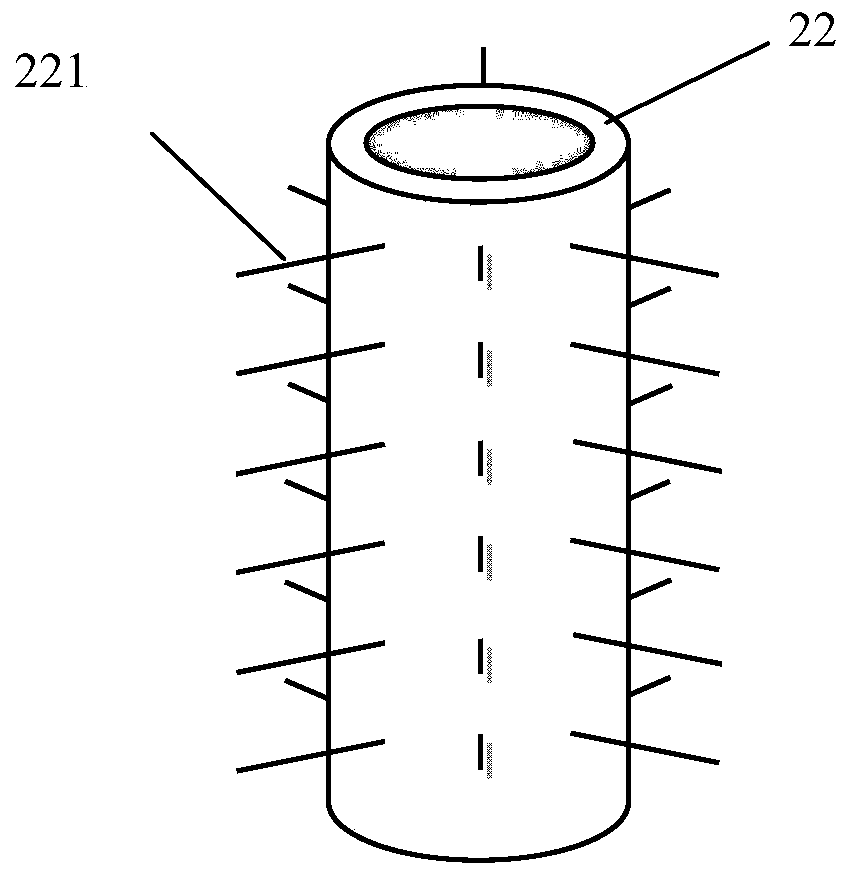Preparation method of dendritic nanotube array, method for identifying tumor cells, and microfluidic device for capturing and in situ regulating cancer cells
A nanotube array, tumor cell technology, applied in tumor/cancer cell, tissue cell/virus culture devices, biochemical equipment and methods, etc., can solve problems such as cognition of the mechanism that restricts the activity of cancer cells, and achieve excellent biosafety Sexuality, the effect of precise drug regulation
- Summary
- Abstract
- Description
- Claims
- Application Information
AI Technical Summary
Problems solved by technology
Method used
Image
Examples
preparation example Construction
[0040] The preparation method of a kind of branched nanotube array of the present invention: its specific steps are:
[0041] (1) Using atomic layer deposition (ALD for short) technology, gas-phase diethyl zinc is used as a precursor and mixed with water vapor into the reaction chamber, and a ZnO film is deposited on the surface of the substrate film and the inner wall of the hole. The thickness value of the ZnO thin film is 30~40nm;
[0042] (2) continue to feed trimethylaluminum and water vapor in the gas phase for a period of time, and deposit Al on the surface of the ZnO film 2 o 3 nanolayer, the Al 2 o 3 The thickness of the nano-layer is 10-20nm;
[0043] (3) in BCl 3 and Cl 2 Under the mixed gas, the plasma etched away the Al on the surface of the substrate film 2 o 3 / ZnO layer, followed by O 2 Part of the polycarbonate film is etched away by plasma to expose the nanotube array structure. At this time, by changing the O 2 The length of the plasma etching time...
Embodiment 1
[0063] Human breast cancer cells (MCF7) were selected as a model system for cell capture, and 50 μL containing 10 6 The cells / mL MCF7 cell suspension was injected into the upper cell culture tank 1 of the microfluidic device, placed in the cell culture incubator and incubated for 60 minutes, then washed with a large amount of cell culture medium, and observed under a fluorescence microscope, a large number of cells can be found Captured, the capture efficiency can reach more than 90%.
Embodiment 2
[0065] To study the specific detection ability of dendritic nanotubes:
[0066] Human breast cancer cells (MCF7) and human prostate cancer cell lines (PC-3) were used as EpCAM positive cell line controls, and human cervical cancer cell lines (Hela) and human T lymphocytes (Jurkat T) were used as EpCAM negative cell line controls. 50 μL containing 10 6 The cells / mL cell suspension was injected into the upper cell culture pool 1 of the microfluidic device, placed in the cell culture incubator and incubated for 90 minutes, and then washed with a large amount of cell culture medium, observed under a fluorescence microscope, it can be found that EpCAM is positive In the cell line group, a large number of cells were captured, and the capture efficiency was more than 90%; in the EpCAM-negative cell line group, a small number of cells were captured, and the capture efficiency was less than 40%.
PUM
| Property | Measurement | Unit |
|---|---|---|
| thickness | aaaaa | aaaaa |
| thickness | aaaaa | aaaaa |
| separation | aaaaa | aaaaa |
Abstract
Description
Claims
Application Information
 Login to View More
Login to View More - R&D
- Intellectual Property
- Life Sciences
- Materials
- Tech Scout
- Unparalleled Data Quality
- Higher Quality Content
- 60% Fewer Hallucinations
Browse by: Latest US Patents, China's latest patents, Technical Efficacy Thesaurus, Application Domain, Technology Topic, Popular Technical Reports.
© 2025 PatSnap. All rights reserved.Legal|Privacy policy|Modern Slavery Act Transparency Statement|Sitemap|About US| Contact US: help@patsnap.com


